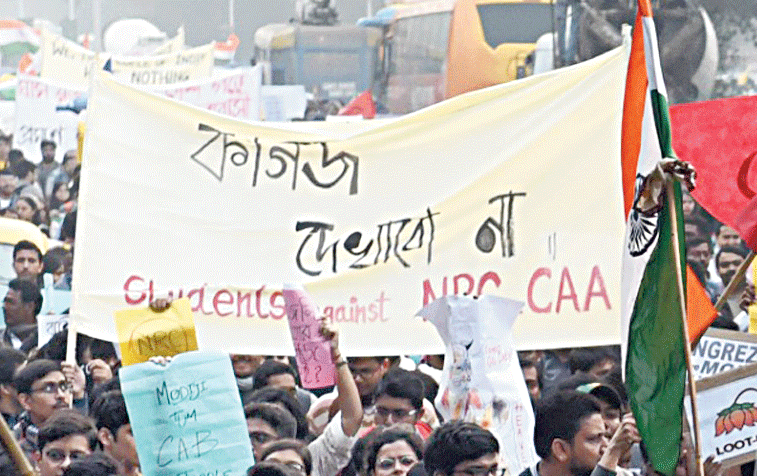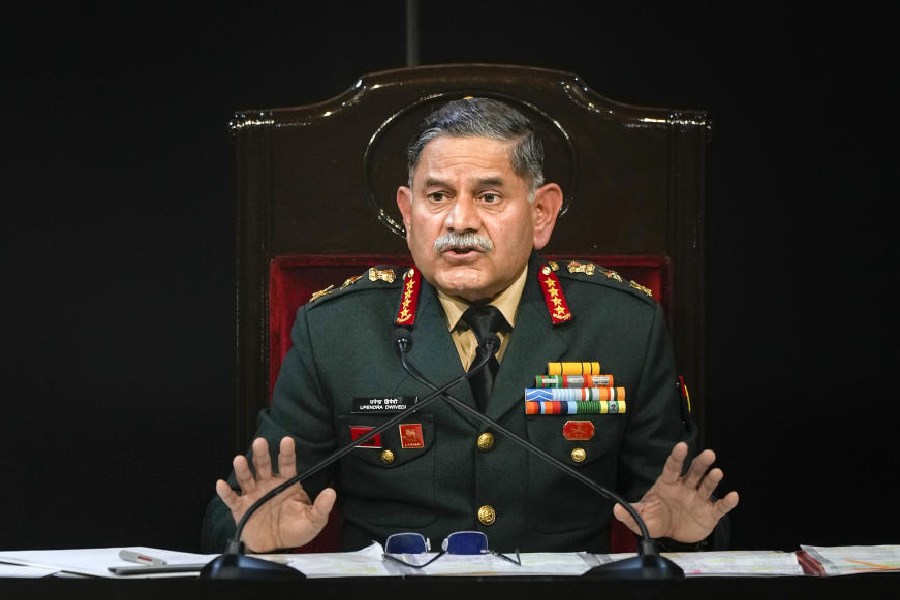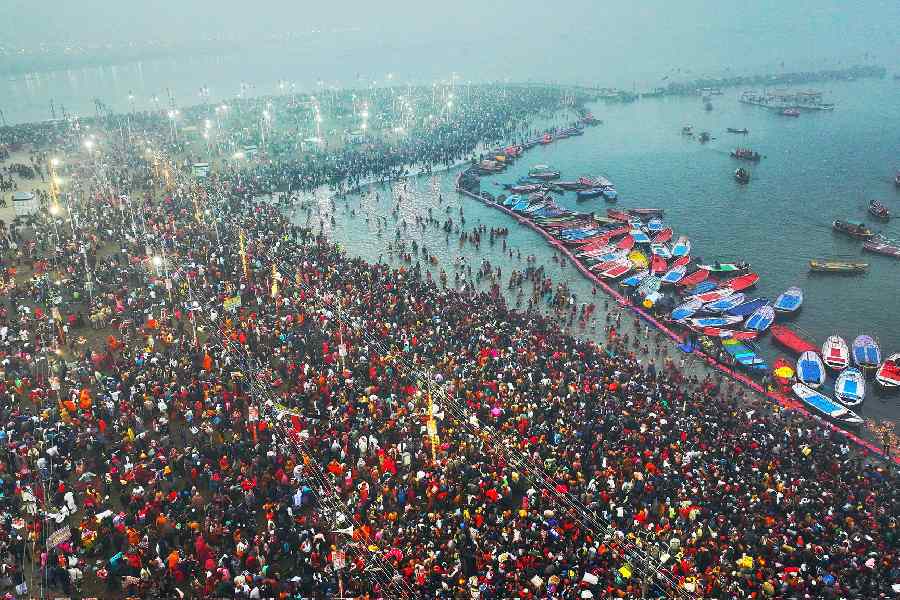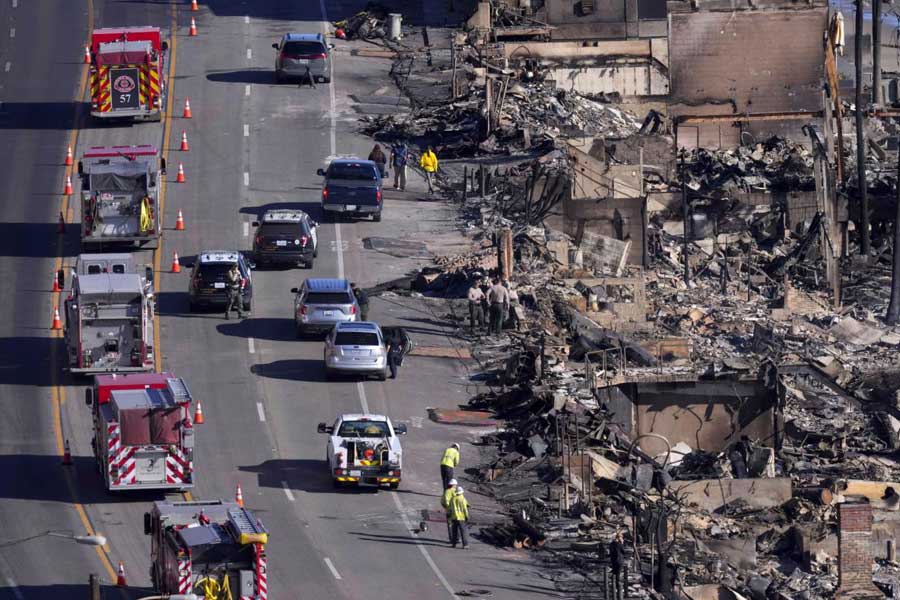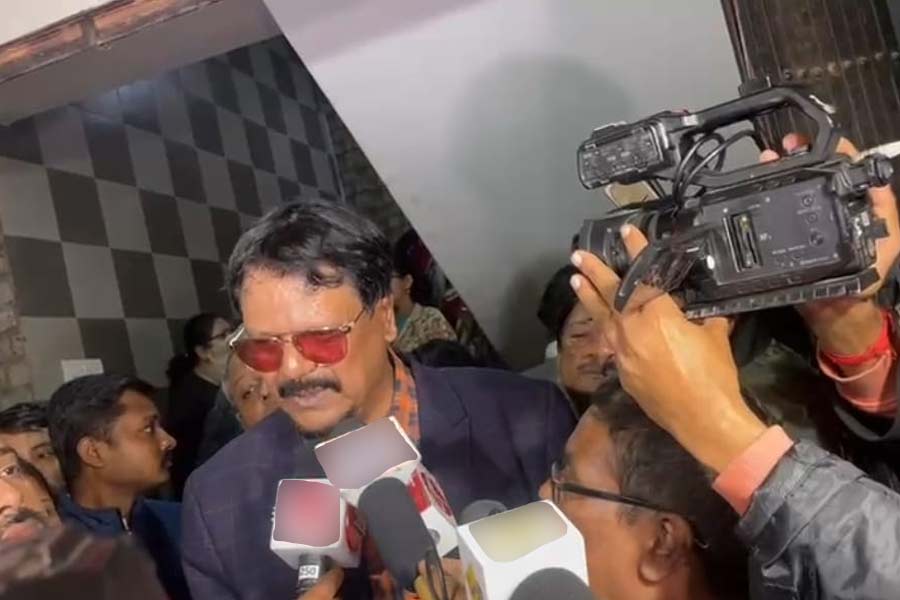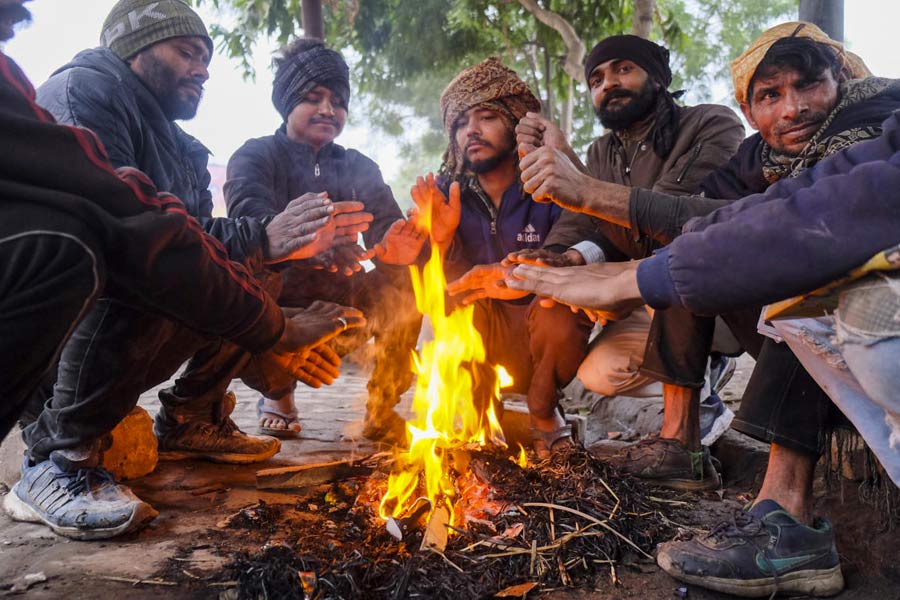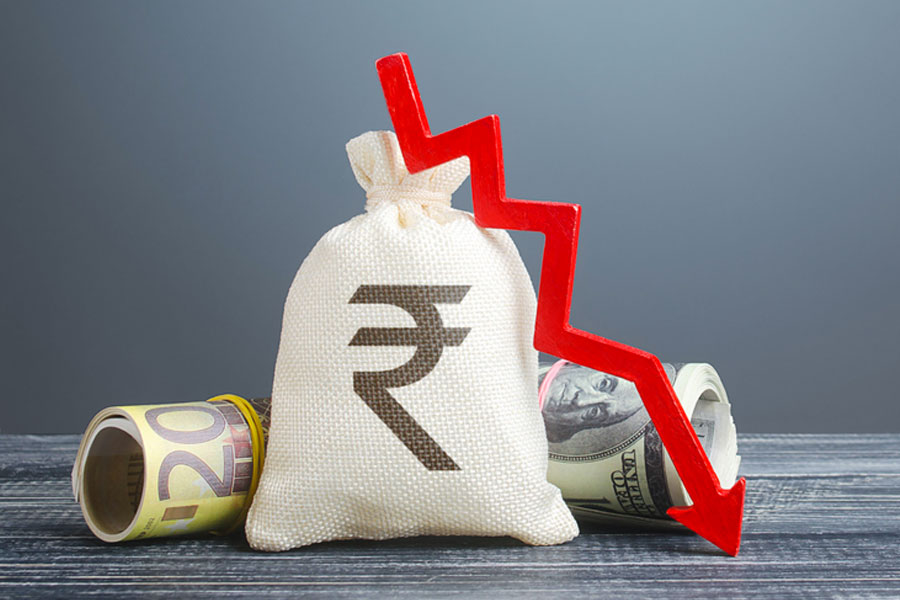Ever since the agitation against the Citizenship (Amendment) Act and, by association, any proposed National Register of Citizens and the census-linked National Population Register was kick-started in Calcutta on December 13 last year, the country has witnessed an explosion of symbolism. It has, for example, become routine for the national flag to be flaunted at political demonstrations and for the national anthem to be sung outside mosques. There has also been a rash of sit-ins, beginning from the one at Shaheen Bagh in Delhi but extending to other places such as Park Circus in Calcutta, where Muslim women have been at the forefront. Finally, the anti-CAA shows of strength have also witnessed some well-publicized participation of students from elite institutions who have hitherto kept a distance from public affairs.
It is still too early to be sure as to how the turbulence in India has shaped public opinion. The large anti-CAA demonstrations in most parts of India have been predominantly Muslim — but not exclusively — in composition. They have also been countered by a show of strength by the Bharatiya Janata Party, including in West Bengal where the state administration is hostile. While there have been fears that these bouts of competitive mobilization will deepen any pre-existing communal divide, large-scale communal tension has not materialized. Regardless of partisan positions — laced with exaggerated use of poetry — the debate over the CAA has yet to permeate into all corners of India.
More to the point, the issue continues to be dominated by a great deal of half-baked information and an overdose of alarmism. For example, the belief that the CAA will deprive Muslims of their citizenship is widely believed in Muslim localities in nearly all parts of the country. This despite repeated assurances by the political leadership of India that the CAA has no powers to take away the citizenship of even a single individual. At the same time, the pro-CAA camp has been relatively less successful in disseminating emotional messages centred on the plight of Hindus from Bangladesh, the prime beneficiaries of the modified Citizenship Act.
That the anti-CAA stir in the country has been driven largely by India’s Muslim minority is obvious. Denying this is to challenge reality. However, it is true that the traditional leadership of the Muslim community has quite deliberately chosen to operate from behind the scenes. The frontal role has been assigned to Muslim women and a section of the Muslim middle class, mainly students and media professionals. Tactically, this has served a purpose. It has allowed the anti-CAA protests, especially the sit-ins, to confront stereotypes and seek allies in the wider world. Equally, the Muslim participants — unlike, say, in the movement against the Shah Bano judgment in the late-1980s — have been conscious in trying to appropriate nationalist symbols. In trying to suggest that this is a movement against discriminatory practices, the Muslim leadership has demonstrated a great deal of political flexibility. Fully aware that the CAA does not deprive anyone of Indian citizenship, the movement has veered to the defence of something called the ‘idea of India’ which claims to uphold all the traditions of Indian nationalism. This has succeeded in endearing the movement to idealistic students, not to mention India’s Left community that makes up with intellectual influence what it lacks in electoral clout.
In the ‘niceness’ test of politics, the anti-CAA stir has been able to quite successfully outshine its rivals. With the issue of the Bengali Hindus remaining submerged from the mainstream discourse, the protesters taking on Narendra Modi and Amit Shah have assumed the mantle of being ‘nice’ and painted the other side as ‘nasty.’ They have also succeeded in attracting favourable coverage in the Western media by successfully portraying the CAA as a horrible, exclusionary law that offends everything India has always stood for.
Politics, however, is more than a test of niceness. It is likely that sooner rather than later the excitement over the CAA will fizzle out. Already there is mounting local exasperation in Delhi over the Shaheen Bagh disruption and the more ‘political’ among the Muslim activists are advising a tactical withdrawal. The Opposition parties may press some state governments to pass anti-CAA resolutions in the state assemblies, but these have no validity since the Constitution is quite explicit that citizenship is exclusively in the domain of the Centre. Mamata Banerjee will probably press on the longest, till she is clear that she enjoys a clear upper hand in the forthcoming municipal and urban bodies polls. If the local BJP succeeds belatedly in mounting a spirited fightback on the CAA and turning the spotlight on Hindu migrants from Bangladesh, the issue will linger but assume a uniquely local complexion after the Rules of the CAA are announced. Otherwise, the focus will shift to the Supreme Court which at present seems to be in no hurry to hear the challenge to the CAA.
Viewed cynically, if the movement against the CAA winds down at this stage, the match will probably be a draw. However, if the protests persist, the advantage will steadily veer in favour of the government.
For a start, it will become increasingly difficult for a sectarian mobilization based on contrived victimhood to maintain the pretence indefinitely. The tensions between those who believe in maintaining a liberal façade and those who would rather the Muslim community assert itself as Muslims — without the pretence of including all — are already visible to the discerning. They will become sharper as the days go by.
Secondly, questions will soon be asked — particularly after the ridiculous doubts over the census and NPR are thrown aside — about the implications of removing the religious identities of those who will be conferred citizenship. It would be one thing if the benefits are extended notionally to Ahmadiyyas who have been declared apostate in Pakistan. Since few Ahmadiyyas from Pakistan have sought refuge in India, the likely benefits are hypothetical. However, removing the religious tag and extending the facility to all neighbouring countries (as the protesters desire) opens up the floodgates to Rohingya refugees from Myanmar who are at present camped in Bangladesh.
It does not stop there. All over West Bengal, Mamata Banerjee’s followers have put up hoardings proclaiming, “All are citizens.” As a slogan it may be delightfully universal, but in concrete terms it is meant to obliterate the distinction between refugees and illegal immigrants. The CAA is an attempt to bring to the surface, regularize and codify an illegal migration trail. Hitherto, all illegal immigrants have banked on their own wits, community support and organized rackets to secure Indian papers. Some political parties aided the process by securing their registration as voters. In the past this informal arrangement aided the Hindus as they fled from religious persecution in Bangladesh. However, in the past two decades there has been the migration of Muslim Bangladeshis into West Bengal — earlier it was to Assam. These people have helped shift the demography of border districts and their footprint is now visible in places such as New Town in Greater Calcutta. Although the CAA doesn’t affect their status, it clearly establishes them as people who are not automatically entitled to secure Indian citizenship.
By suggesting that the informal arrangement of casual citizenship should continue without break, the West Bengal government is tacitly endorsing a system of open borders between India and Bangladesh. The implications are serious and once the reality permeates through the romantic poetry, there could be a hardening of positions and even a sharpening of religious identities.
As a piece of legislation, the CAA isn’t revolutionary but the debate it has triggered is certain to have profound political implications, particularly in eastern India.

